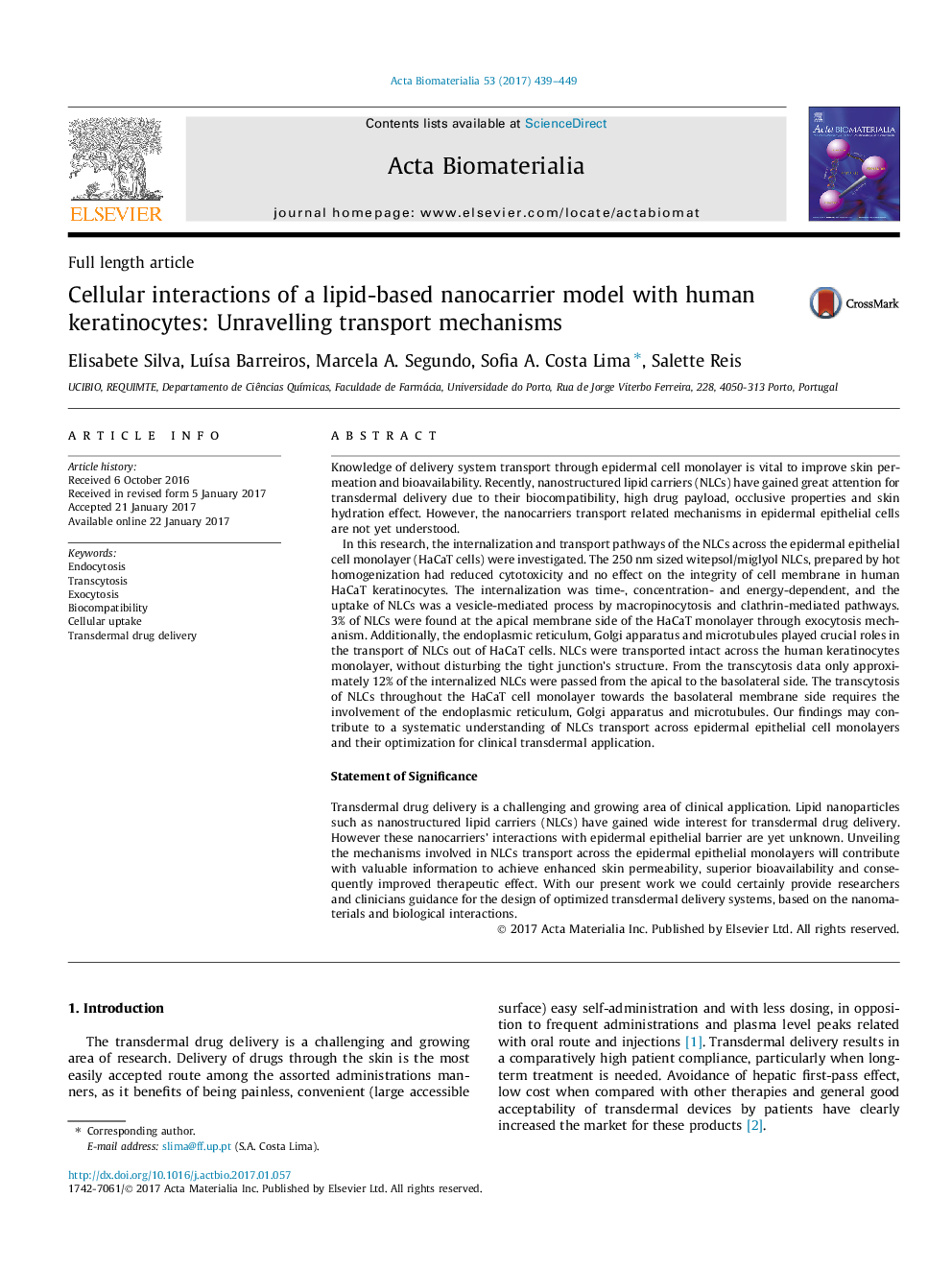| کد مقاله | کد نشریه | سال انتشار | مقاله انگلیسی | نسخه تمام متن |
|---|---|---|---|---|
| 6449600 | 1415933 | 2017 | 11 صفحه PDF | دانلود رایگان |
Knowledge of delivery system transport through epidermal cell monolayer is vital to improve skin permeation and bioavailability. Recently, nanostructured lipid carriers (NLCs) have gained great attention for transdermal delivery due to their biocompatibility, high drug payload, occlusive properties and skin hydration effect. However, the nanocarriers transport related mechanisms in epidermal epithelial cells are not yet understood.In this research, the internalization and transport pathways of the NLCs across the epidermal epithelial cell monolayer (HaCaT cells) were investigated. The 250Â nm sized witepsol/miglyol NLCs, prepared by hot homogenization had reduced cytotoxicity and no effect on the integrity of cell membrane in human HaCaT keratinocytes. The internalization was time-, concentration- and energy-dependent, and the uptake of NLCs was a vesicle-mediated process by macropinocytosis and clathrin-mediated pathways. 3% of NLCs were found at the apical membrane side of the HaCaT monolayer through exocytosis mechanism. Additionally, the endoplasmic reticulum, Golgi apparatus and microtubules played crucial roles in the transport of NLCs out of HaCaT cells. NLCs were transported intact across the human keratinocytes monolayer, without disturbing the tight junction's structure. From the transcytosis data only approximately 12% of the internalized NLCs were passed from the apical to the basolateral side. The transcytosis of NLCs throughout the HaCaT cell monolayer towards the basolateral membrane side requires the involvement of the endoplasmic reticulum, Golgi apparatus and microtubules. Our findings may contribute to a systematic understanding of NLCs transport across epidermal epithelial cell monolayers and their optimization for clinical transdermal application.Statement of SignificanceTransdermal drug delivery is a challenging and growing area of clinical application. Lipid nanoparticles such as nanostructured lipid carriers (NLCs) have gained wide interest for transdermal drug delivery. However these nanocarriers' interactions with epidermal epithelial barrier are yet unknown. Unveiling the mechanisms involved in NLCs transport across the epidermal epithelial monolayers will contribute with valuable information to achieve enhanced skin permeability, superior bioavailability and consequently improved therapeutic effect. With our present work we could certainly provide researchers and clinicians guidance for the design of optimized transdermal delivery systems, based on the nanomaterials and biological interactions.
Transport pathways of NLCs across human epidermal epithelial monolayer.95
Journal: Acta Biomaterialia - Volume 53, 15 April 2017, Pages 439-449
